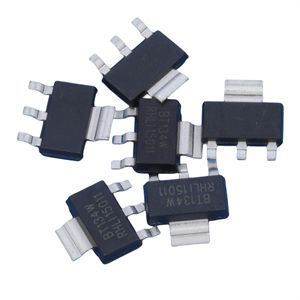Date:2024-09-29 Categories:Product knowledge Hits:358 From: Guangdong Youfeng Microelectronics Co., Ltd(YFW)
How to distinguish the electrode and transistor type of a transistor? Do you have any techniques or methods?
1、 Visual inspection method
1. Identification of Pipe Types
Generally, whether the tube type is NPN or PNP should be distinguished from the model marked on the tube shell. According to the standards issued by the Ministry, the second digit (letter) of the transistor model, A and C represent PNP transistors, and B and D represent NPN transistors. For example:
3AX is a PNP type low-frequency low-power transistor, and 3BX is an NPN type low-frequency low-power transistor
3CG is a PNP type high-frequency low-power transistor, and 3DG is an NPN type high-frequency low-power transistor
3AD is a PNP type low-frequency high-power transistor, and 3DD is an NPN type low-frequency high-power transistor
3CA is a PNP type high-frequency high-power transistor, and 3DA is an NPN type high-frequency high-power transistor
In addition, there are internationally popular 9011~9018 series high-frequency low-power transistors, except for 9012 and 9015 which are PNP transistors, the rest are NPN transistors.
2. Discrimination of tube poles
Commonly used small and medium-sized power transistors have metal round shells and plastic packaging (half column type) and other shapes. Figure T305 introduces three typical shapes and tube pole arrangements.
2、 Use a multimeter to determine the resistance range
There are two PN junctions inside the transistor, and the e, b, and c poles can be distinguished using a multimeter's resistance range. In the case of fuzzy model labeling, this method can also be used to distinguish pipe types.
1. Discrimination of Base
When determining the transistor electrode, the base electrode should be confirmed first. For NPN transistors, connect the black probe to the assumed base and the red probe to the other two poles respectively. If the measured resistance is small, about several hundred to several thousand ohms; By swapping the black and red probes, the resistance measured was relatively high, exceeding several hundred kiloohms. At this point, the black probe was connected to the base. PNP transistor, the situation is exactly the opposite. When both PN junctions are positively biased during measurement, the red probe is connected to the base. In fact, the base of a low-power transistor is generally arranged in the middle of the three pins. The above method can be used to connect the black and red probes to the base respectively, which can not only determine whether the two PN junctions of the transistor are intact (the same measurement method as that of a diode PN junction), but also confirm the transistor type.
2. Discrimination between collector and emitter
After determining the base, assume that one of the remaining pins is the collector c and the other is the emitter e. Use your fingers to pinch the c and b terminals respectively (i.e. replace the base resistor Rb with your fingers). At the same time, connect the two probes of the multimeter to c and e. If the tested tube is NPN, connect the black probe to the c pole and the red probe to the e pole (opposite to PNP tube), and observe the deflection angle of the pointer; Then set the other pin as the c pole, repeat the above process, compare the deflection angles of the pointer two times, the larger one indicates that the IC is large, the tube is in an enlarged state, and the corresponding assumed c and e poles are correct.

Previous: Classification, Structure, and Principle of MOSFET
Next: Using voltage inspection method to quickly locate fault points in integrated circuits